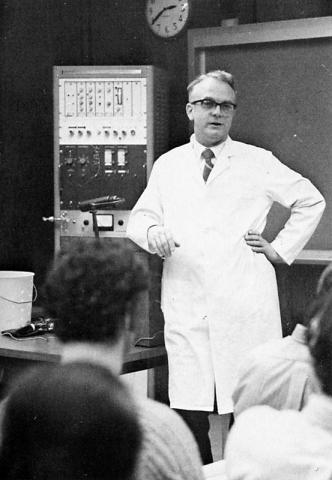The Master of Science in Anesthesia Program at Case Western Reserve University began in 1970, the second anesthesia program of its kind in the nation. The program originally awarded a baccalaureate degree, but evolved into a professional postgraduate program in 1987 and began granting the master’s degree.
In 2008, Case Western Reserve University expanded its program to greater serve the anesthesiology community and the growing anesthetists profession. Through a partnership with the University of Texas Houston Medical Center, CWRU opened a Houston location, which accepted its inaugural class in 2010.
Building on that success, CWRU opened a Washington, D.C. location and accepted its inaugural class in 2012.
The program is accredited by the Commission on Accreditation of Allied Health Education Programs.
CWRU School of Medicine
Case Western Reserve University School of Medicine has trained medical students, served the community and been at the forefront of discovery in Cleveland for more than 175 years.
Found in 1843, the school was originally located in Downtown Cleveland and was known as the Medical Department of Western Reserve College, or Cleveland Medical College. By 1865, the medical school’s graduates included Nancy Talbot Clarke, the second woman to graduate from an American medical school; six of the first seven female physicians in the United States; and the third African American to graduate from medical school.
The Medical Department of Western Reserve College continued to be recognized as a leader in medical education. In a 1911 survey of 155 North American medical schools commissioned by the Carnegie Foundation for the Advancement of Teaching, Abraham Flexner reported that the Medical Department of Western Reserve College was second only to Johns Hopkins University.
Forty years later, the college revolutionized medical education with a new curriculum that integrated basic and clinical sciences, and conformed to students’ needs. Created by faculty members Drs. Joseph Wearn, T. Hale Ham, and John L. Caughney Jr., the curriculum of 1952 became the most progressive medical curriculum in the country at the time. Central themes and ideas of the innovation included:
- Teaching should be based on problem-solving
- Teaching should be interdisciplinary
- Curriculum should be designed as a continuum by faculty subject committees instead of departments
- Students should feel responsible for their own education
- Basic principles of medicine should be emphasized
- Basic sciences and clinical sciences should be integrated
These tenets remain basic principles of today’s Western Reserve curriculum.
In addition to being one of the foremost medical schools, Case Western Reserve University School of Medicine has established itself as a research powerhouse. The school’s research program began in 1887 with the construction of the H. K. Cushing Laboratory and the Physiological Laboratory in Downtown Cleveland.
Since then, faculty and alumni have accomplished major achievements in the medical field. Highlights include:
- Development of the modern technique for human blood transfusions
- The process of chlorinating drinking water
- The creation of an early heart-lung machine used during open-heart surgery
- Discovery of the Hageman factor in blood clotting
- Discovery of the gene for osteoarthritis
- The first surgical treatments of coronary artery disease
- The creation of the world’s first human artificial chromosome
Today, Case Western Reserve University School of Medicine is one of the nation’s top 25 medical schools and the largest biomedical research institution in Ohio. Among its former and current faculty and alumni are eight Nobel laureates, six members of the Institute of Medicine, two members of the National Academy of Sciences, two U.S. Surgeon Generals, and the first woman director of the Center for Disease Control.
Learn more about the School of Medicine here.
Learn more about Case Western Reserve University’s history here.


